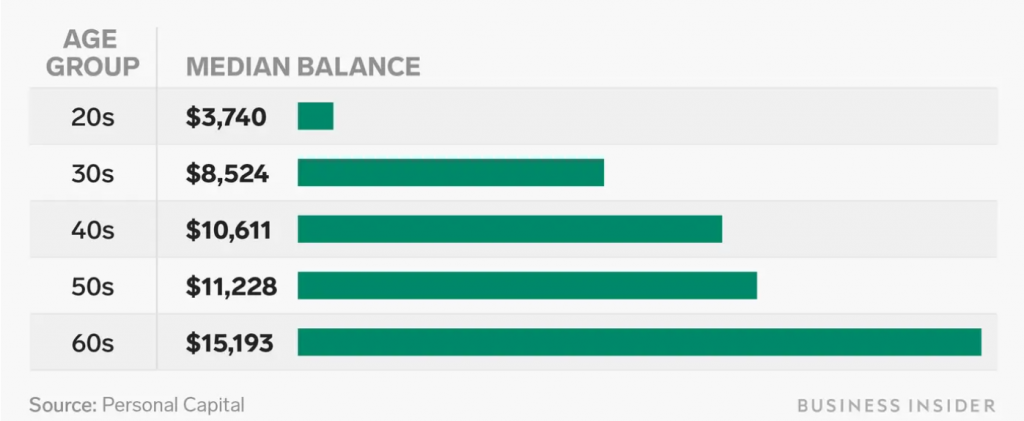Emergency Fund: Respond vs React
When life happens, an emergency fund provides you the critical time and space needed to respond versus react.
It takes as much energy to wish as it does to plan.
(Eleanor Roosevelt)
Life happens
One of the silver linings to the pandemic has been its ability to highlight the value of an emergency fund in swift, stark terms. However, as with many big life and financial lessons, the learning often fades as the crisis recedes or people learn to live with the new normal. But, the best time to plan is before another crisis hits. And, the best reason to plan is so you can withstand future crises as they inevitably arise. So, as sort of a post-mortem (no pun intended), now is a good time to reflect on the role an emergency fund in navigating life.
When it comes to an emergency fund, most people are familiar with it; some see the value of it; few a have a sufficient amount of it. Before diving in too deep, let’s define emergency fund. It’s essentially a certain amount of cash set aside to address life’s common misfortunes: car breakdown, leaky roof, medical emergency, unforeseen tax bill, job loss, death in the family, etc. The typical American household has $8,863 in cash.[1] Below is the average cash holding for different age groups.[2] Where do you fall in the mix?

Value of an emergency fund
Regardless of whether or not you have an emergency fund, it’s important to recount its benefits and, therefore, its value within your financial “toolbox.”
Time: An emergency fund buys you precious time to process your new situation; research potential alternatives or workarounds; find a viable replacement; grieve a loss. Ultimately, this stash of cash enables you to make the best decision for yourself and loved ones within a short(er) period of time.
Insurance: An emergency fund is a form of self-funded insurance that helps prevent an unforeseen inconvenience from becoming a catastrophe. For example, if your car breaks down, an emergency fund helps you either to fix it or to buy a replacement rather than face the possibility of losing your job due to the lack of transportation.
Interest savings: Although modern life offers a number of alternative (and creative) ways to access cash quickly, convenience is often costly. Here are the average annual interest rates charged for different forms of borrowing.
· Credit Card: 15%-20% (depending on credit score)
· Retirement accounts (hardship withdrawal): Income tax and 10% penalty on distribution
· Home Equity Line of Credit (HELOC): 5%
Unfortunately, in trying to solve one problem, you inadvertently create bigger problems down the line. Take credit cards for instance. A interest charge of 15% can turn a $5,000 loan into a $10,000 loan in a 5-year period (assuming minimum payments). Meanwhile, an interest charge of 5% can double a loan amount over a 15-year period. Convenience can become very inconvenient sometimes very quickly.
Growth: An emergency fund offers you the financial and psychological buffer needed to stay invested in the market in order to benefit from the (eventual) rebound, capital appreciation and compounding. When you borrow or withdraw from your retirement savings account to address personal emergencies or fund living expenses, you temporarily or permanently forego the future growth of your retirement savings. Seven percent is the average annualized return for a 70/30 portfolio. A 7% return will double your portfolio over a 10-year period.
How much to put aside?
The general rule-of-thumb is to put aside 3 months of cash for dual-income households and 6 months for single-income households. However, I personally recommend 9-12 months for my single female clients, especially if they have dependents. There are numerous studies that argue against holding too much cash, foremost being opportunity cost. Theoretically, you could invest additional savings in the market for potentially higher returns. However, my view on an emergency fund is similar to paying off one’s mortgage in order to live mortgage free, especially if you intend to stay in the home for a long time (10 years plus). Comparing average investment return with greater peace of mind is a case of apples versus oranges. Truth is, financial strength is built on having a combination of both. Moreover, they mutually strengthen each other.
Where to put your emergency fund?
I recommend putting emergency fund in a high-interest online savings account (e.g., Ally Bank, Capital One 360). While some people prefer to put a portion of their emergency fund in a money market account or short-term CDs to eke out a little more interest, I see a high-interest online savings account as a good compromise among conflicting needs: preservation of purchasing power (interest); safety (FDIC insured); liquidity (cash).
How to save for it?
Consider redirecting 15% of every paycheck to an online savings account until you have reached your target amount. At fifteen percent, you can build up a sufficient emergency fund over a short(er) period of time without being forced to make radical lifestyle changes.
Final thoughts
In art, there’s a technique that leverages negative space (typically black) to highlight the profiled object. When it comes to an emergency fund, we often don’t see its true value until viewed against an emergency and compared with alternatives, which often carry greater financial and emotional costs. However, given the unpredictability of life, an emergency fund provides the small, but critical, space needed to respond versus react. While the former is a decision, the latter is a reflex. And, oftentimes, that makes all the difference between success and failure. As is, an emergency fund is really an agency fund.
[1] “This chart shows how much money Americans have in savings at every age,” CNBC, March 2019.
[2] “Here’s how much the typical American has saved in cash, at every age,” Business Insider, March 2020.
RECENT POSTS
March 2025
Although 2024 double-digit stock market return suggests a strong US economy, the recent change in government leadership and policies highlights the underlying risk (uncertainty) that now weighs down the market and tests American exceptionalism.
December 2024
The fifth anniversary of my advisory firm and the holiday season have prompted me to reflect on my Life’s journey so far and, in so doing, unexpectedly arrive at an unconventional perspective on gifting.
October 2024
August steep market decline serves as a useful dress rehearsal for how we might react in a bear market and what we should do now to increase survival.
Get a free financial education.
Learn more about key financial topics, such as investing, 401k, disability insurance, paying for a home, at your own convenience. Sign up for Women’s Wealth monthly newsletter and have relevant information delivered to your inbox.

Live life on your own terms.
Do you find yourself constantly stressed or bored at work and wondering when you can live life on your own terms? Learn how to harness money’s energy and begin to create your life rather than manage it.
CONNECT
Anh Thu Tran
Women’s Wealth LLC
P.O. Box 1522
Tacoma, WA 98401
anhthu@womenswealthllc.com
(206) 499-1330
Women’s Wealth LLC is a Washington State registered investment advisor. The presence of this website on the Internet shall not be directly or indirectly interpreted as a solicitation of investment advisory services to persons of another jurisdiction unless otherwise permitted by statute. Follow-up or individualized responses to consumers in a particular state by our firm in the rendering of personalized investment advice for compensation shall not be made without our first complying with jurisdiction requirements or pursuant an applicable state exemption. For information concerning the status or disciplinary history of a broker-dealer, investment advisor, or their representatives, a consumer should contact their state securities administrator.
© 2021 Women’s Wealth LLC. All rights reserved. | Design by Erin Morton Creative, LLC.



